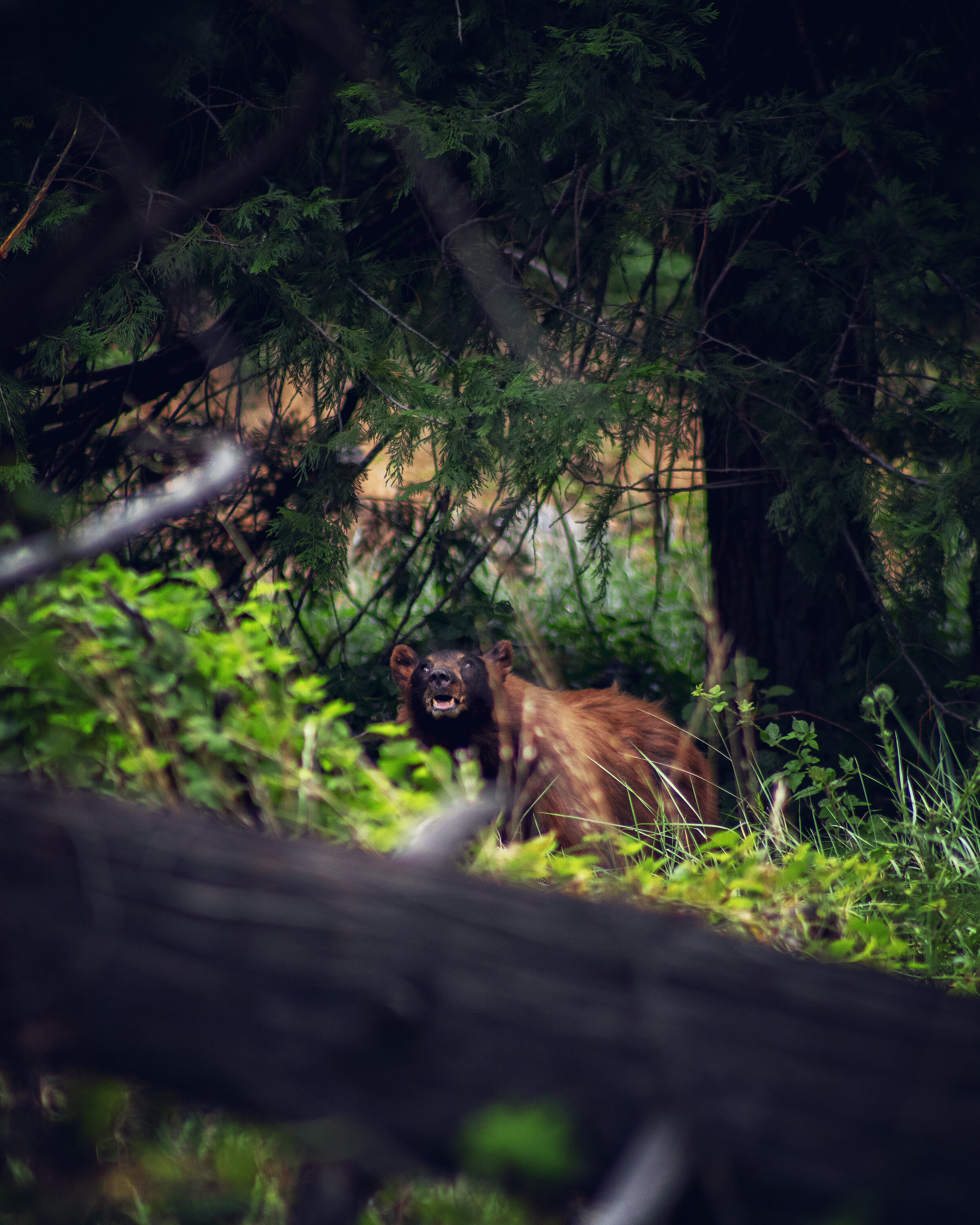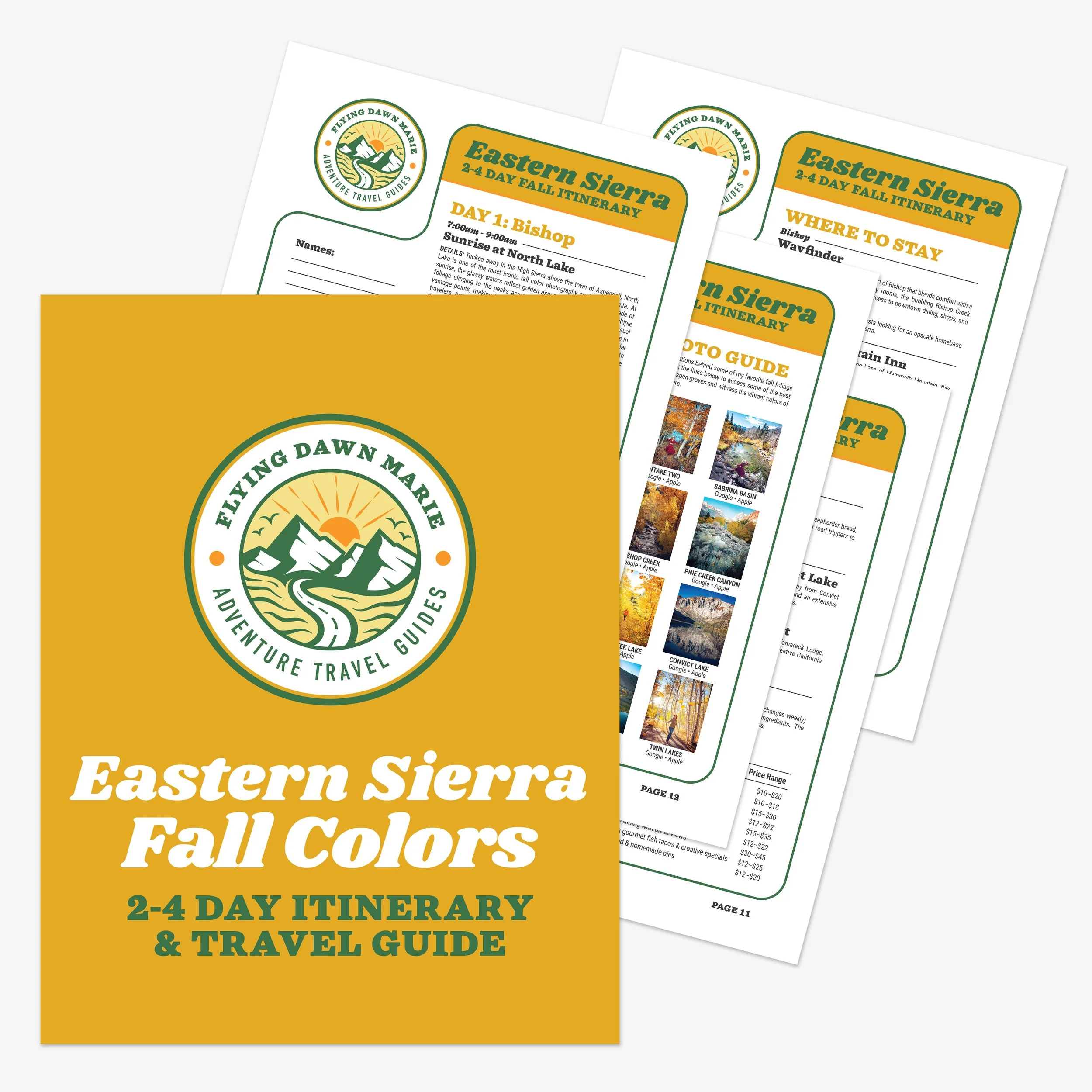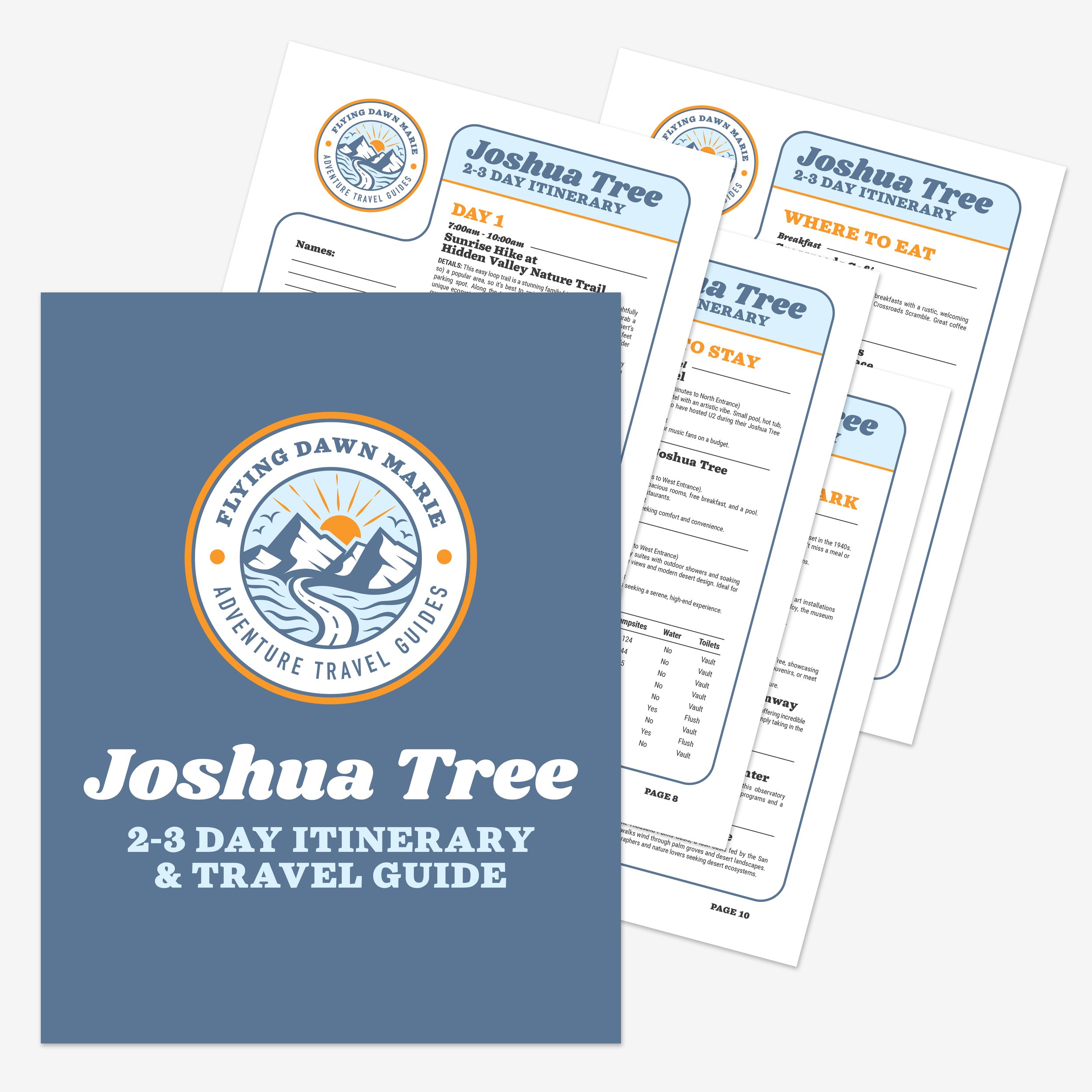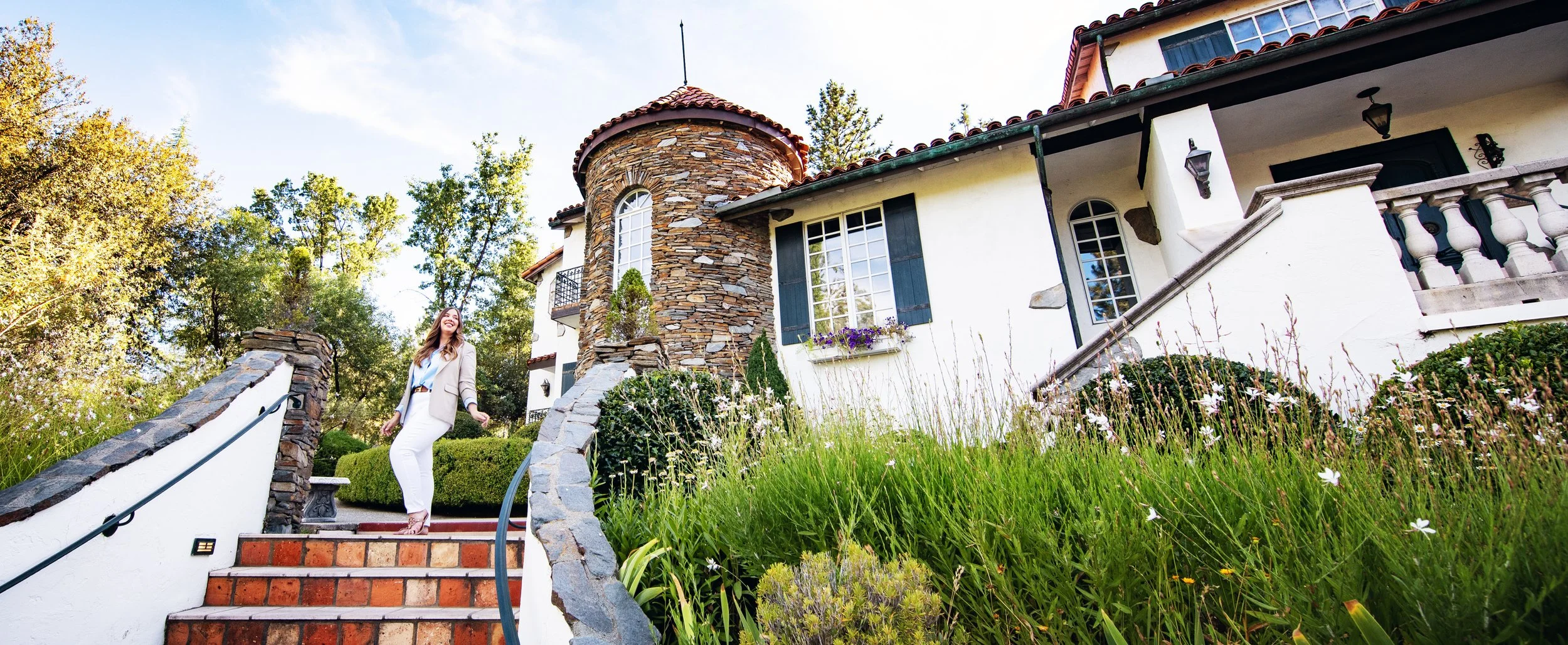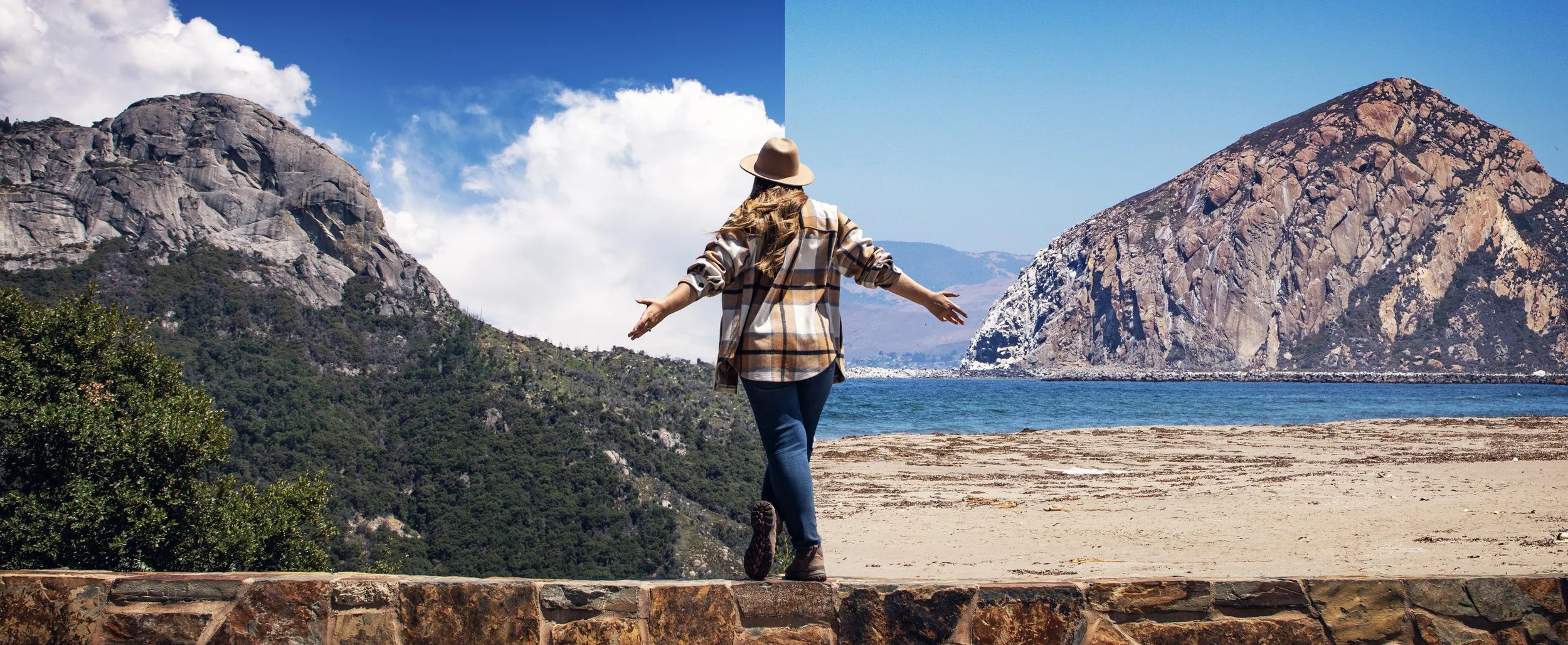Top Tips from a Yosemite Ranger: How to Make the Most of Your Summer Visit
Hi friends! Are you planning a trip to Yosemite National Park this summer? I recently got the chance to walk Cook’s Meadow in the heart of Yosemite Valley with longtime Ranger and Public Affairs Officer Scott Gediman. With decades of experience sharing the park with visitors from around the world, including presidents and celebrities, he offered valuable insights for guests heading to the park in the coming months. From navigating the summer reservation system to spotting wildlife and soaking in the views, here’s what you need to know to make the most of your time in Yosemite National Park.
Kayaking below Half Dome along the Merced River near Stoneman Bridge in Yosemite Valley
Yosemite 2-4 Day Summer Itinerary & Travel Guide
If you’re planning a Yosemite road trip during the summer months, make sure to download my complete Yosemite 2-4 Day Summer Itinerary & Travel Guide, which includes an hour-by-hour schedule, Google & Apple map pin locations, the best stargazing spots, a dining guide, recommendations on where to stay, activities outside the park, and more! Download it today and make your Yosemite planning easy!
Yosemite Ranger Scott Gediman in Cook’s Meadow
Meet Your Guide: Ranger Scott Gediman
Yosemite is one of the most beloved national parks in the U.S., and few people have spent more time helping others experience its wonder than Ranger Scott Gediman. As the park’s Public Affairs Officer, he’s been a familiar face for decades, often featured on TV, speaking with elected officials, and welcoming millions of visitors each year.
“I’m a Ranger here and I’ve got a great job,” he said as we strolled through Cook’s Meadow on a sunny June afternoon. “I serve as the park’s Public Affairs Officer, so that means I’m the official spokesperson. I’ve met two presidents, and I get to go on TV and tell the world about the beauty of Yosemite National Park.”
His passion for the park is infectious, and his perspective is grounded in both deep love and practical wisdom. And that’s exactly what you need heading into one of the busiest travel seasons of the year.
Half Dome views from Cook’s Meadow in the Yosemite Valley
1. Navigate the Summer Reservation System
Yosemite National Park currently has a summer reservation system in place, which was designed to help protect the park’s fragile environment while also improving the visitor experience during peak seasons. But that doesn’t mean it’s impossible to visit on short notice.
“Pack your patience,” Ranger Gediman said with a smile. “Right now, if you don’t have a reservation, you can come in before 6 AM or wait until 2 in the afternoon.”
That flexibility is a hidden gem. Early risers can enjoy golden hour in the Valley with fewer crowds, and those arriving later in the day can catch sunset views. The key is to know your options before you go—and to be ready to adjust your plans.
Helpful tips:
• Visit the official Yosemite NPS website to check current reservation requirements and reserve your dates on Recreation.gov.
• The NPS is allowing more reservations per day than previous years, and more spots get released to the public 7 days in advance of your desired date. As a result, many dates still have reservations left to snag.
• Consider visiting midweek instead of weekends.
• If you can’t acquire a reservation for a date you’re interested in, consider heading into the park early for an epic sunrise...or spend the morning exploring the incredible gateway towns like Oakhurst and head into the park after 2 PM. Check out some great things to do in the southern gateway here.
• If you decide to enter the park in the afternoon, I’d recommend avoiding trying to enter immediately after 2 PM. The lines at the gates thus far have been much longer as non-reservation visitors are all attempting to get into the park at the same time.
Riding a bike in Yosemite Valley
2. Plan Ahead, Then Be Spontaneous
With 750 miles of trails, towering granite cliffs, alpine lakes, wildflower-filled meadows, and waterfalls galore, Yosemite can feel overwhelming if you’re trying to “see it all.” Ranger Gediman encourages visitors to shift their mindset.
“People say, ‘You must have been on every trail,’ and I say no—there are 750 miles of hiking trails! What I like to do is encourage people to take a look around”, as Gediman asks them, “Do you want to go on a 3-mile hike? A 5-mile hike? People are hiking, people are bicycling, people are painting, people are just enjoying the meadow and looking for wildlife. There’s so much to do!”
The beauty of Yosemite is that there’s no one “right” way to experience it. Whether you’re an avid hiker or just want to sit quietly beneath the trees, there’s space here for your version of the perfect Yosemite adventure.
“I always say it’s a fun balance,” Ranger Gediman added. “Plan a little ahead, but also when you get here—be spontaneous.”
Ideas for every kind of traveler:
• Families with young kids: Try the Lower Yosemite Falls loop or the accessible boardwalk through Cook’s Meadow.
• Casual hikers: The Mirror Lake Trail in the valley or the Taft Point and Sentinel Dome Trails off Glacier Point Road offer stunning views without a full-day commitment.
• Photographers & artists: Sunrise at Tunnel View or sunset at Valley View offer jaw-dropping light and dramatic landscapes. Glacier Point is also a magical spot to witness the golden aspenglow on the face of Half Dome at sunset.
• Cyclists: Rent a bike and cruise along the Valley’s incredible bike trails.
Bear proof food lockers at Taft Point Trailhead in Yosemite National Park
“Speeding Kills Bears” sign in Yosemite Valley
3. Wildlife Encounters: Admire from a Distance & Store Food Smartly
It’s not just Yosemite’s granite peaks that draw awe—it’s also the wildlife. And summer is a prime time to spot mule deer grazing in meadows, squirrels darting between trees, and even the occasional black bear roaming the forest.
“People come to national parks for our spectacular scenery,” Gediman shared, “but the wildlife is a huge part of the park—the animals are protected along with the land, and it’s a great treat to see them here in Yosemite Valley.”
Yosemite’s “mega-fauna”, as Ranger Gediman described it, is the American black bear. This park, which is roughly the size of Rhode Island, is home to between 300 and 500 black bears—just the right number for the available habitat. But keeping them wild depends on all of us doing our part.
“The black bears are active this time of year, so we ask visitors to keep a safe distance from them,” he explained. “An important thing visitors can do is proper food storage when people are in their campground...but the most important thing that visitors can do is slow down. Unfortunately, we have between 15 and 20 bears hit by cars every year, and it’s heartbreaking.”
Bear safety tips every visitor should follow:
• Use designated bear lockers to store everything with a scent—food, drinks, deodorant, sunscreen, toothpaste, even lotion and lip balm. Bear lockers can be found at all campsites, as well as many trailheads.
• Never leave food or scented items unattended in your car, at picnic tables, or in your tent.
• Keep a safe distance from all wildlife. Use binoculars or a telephoto lens for a closer look, and never approach for a photo.
• Drive slowly, especially at dawn and dusk when animals are more active. Anytime you see a yellow “Speeding Kills Bears” sign along the road, that marks a spot where a bear was hit by a vehicle this year.
Black bear in Yosemite Valley near Cook’s Meadow
4. Stewardship Starts with You: Leave Yosemite Better Than You Found It
Beyond following the rules, visitors are encouraged to adopt a stewardship mindset. The park doesn’t just belong to the rangers or the government—it belongs to all of us. And that means protecting it for the next generation, which Ranger Gediman reinforced as he shared with me a special adventure he recently took with his daughter to the top of Half Dome.
This can be as simple as staying on designated trails, packing out your trash, and skipping the shortcut that damages fragile ecosystems. Or it can be as big as volunteering or donating to park support groups like the Yosemite Conservancy.
Easy ways to be a good steward:
• Follow Leave No Trace principles.
• Stay on designated paths and trails, and refrain from stepping into meadows and areas with posted signs about active restoration zones.
• Carry a reusable water bottle and pack out all your garbage—even small wrappers.
• Respect wildlife and other visitors.
• Educate others in your group about how to visit responsibly.
Yosemite Falls seen from Cook’s Meadow in Yosemite National Park
5. Yosemite Summer Conditions: What to Expect
Summer in Yosemite is nothing short of spectacular—but it’s also when the park sees its highest number of visitors, warmest temperatures, and most limited parking. Knowing what conditions to expect can help you better prepare and avoid common frustrations.
“I, personally, am a morning person,” Ranger Gediman shared, “so I love to get here early and start a hike when it’s cool in the morning—it’s just wonderful.”
Crowds & Parking: Expect full parking lots, especially in Yosemite Valley, by mid-morning. If you're arriving between 9 AM and 4 PM, it’s best to park once and use the free shuttle system or explore on foot or by bike. Consider entering the park early to skip the lines at entrance stations and find easier parking, enjoying the most popular spots before the late morning rush
Weather & Air Quality: June through August typically brings warm days and cool nights. In the Valley, daytime temperatures can reach the upper 80s°F to mid-90s°F (30–35°C), while higher elevations like Tuolumne Meadows stay cooler. Occasionally, wildfire smoke may drift into the park from fires caused by lightning strikes in the high country. It's always a good idea to check air quality and weather forecasts before your trip on the official Yosemite NPS website.
Waterfalls & Rivers: In early summer, Yosemite’s waterfalls are at full flow and absolutely roaring. Currently (last week of June), the waterfalls are past peak, but still flowing nicely. By late July or August, several falls begin to turn to a trickle or dry up completely.
The once roaring Merced River drops in levels considerably from the spring months, but the current can be deceivingly strong—even in summer—so always assess current conditions and obey posted warnings. runs cold and swift well into summer. Swimming is allowed in designated areas, along with non-motorized craft, like kayaks, rafts, and stand-up paddle boards. Currently (late June), the Merced waters are at a perfect level for this kind of recreation, especially between Stoneman Bridge and the Sentinel Beach Picnic Area.
Bugs & Bears: With summer warmth comes an uptick in mosquitoes, particularly around water sources and meadows during the early mornings and evenings. Pack insect repellent and wear light, long-sleeved clothing if you’re sensitive to bites. And yes—this is also prime time for bear activity, especially in campgrounds and picnic areas. Always use the provided food storage lockers, and never leave food unattended in your car or at your site.
Fire Restrictions & Campfire Rules: Fire restrictions are often put into place in mid-to-late summer to reduce the risk of wildfires. These rules may limit campfires to specific hours during the day, to designated rings at developed campgrounds, or they may be prohibited altogether in certain areas. Before lighting a campfire, check the current fire restrictions and always fully extinguish it with water—not just dirt—until it’s cool to the touch.
Enjoying Yosemite views from the Superintendent’s Bridge over the Merced River
Final Thoughts from Ranger Gediman: Let the Park Change You
There’s no doubt that Yosemite is one of the most awe-inspiring places on Earth. But as Ranger Gediman reminded us, the most powerful thing you can do here isn’t just hike or take photos—it’s allow yourself to slow down, breathe it all in, and be changed by it.
“Just slow down and take it all in, because there’s no way to see it all in a day, or 2 days, or even a week! Just live in the moment.”
So whether you’re watching the sunrise behind Half Dome, wandering along meadows filled with wildflowers, or hearing the thunder of Yosemite Falls echo through the Valley—remember to pause and soak in the incredible majesty of Yosemite National Park.
Deer resting at the base of the Grizzly Giant in Mariposa Grove of Giant Sequoias
Visit Yosemite | Madera County
If you’re making a trip to the park this summer, consider making Oakhurst your home base. Nestled in the Sierra foothills along scenic Highway 41, this vibrant town is more than just a convenient stop—it's a destination packed with outdoor adventure, rich history, incredible art, and delicious dining. For more info on booking a stay in Oakhurst, check out my full blog post here, as well as Visit Yosemite | Madera County at YosemiteThisYear.com. You can also stop by the Oakhurst Visitor Center for expert advice, access to maps, and insider tips. Here you’ll discover the many hidden gems of Oakhurst, Coarsegold, Bass Lake, and all the southern gateway communities of Madera County.
Yosemite black bear seen along Glacier Point Road
Know Before You Go
• If you’re not familiar with the Leave No Trace Principles, consider familiarizing yourself with them before your trip. Please help leave these special places better than you found them so their natural beauty and historical significance can be enjoyed for years to come.
• Always visit the Travel Alerts page at YosemiteThisYear.com and the official NPS website for the most up-to-date road conditions, air quality, and possible closures prior to your visit.
• Peak-hour reservations are required for the 2025 Summer season. For all the key dates and details, check out my full Yosemite 2025 Summer Reservation System blog post.
• Cell service is unreliable in many parts of Yosemite and the surrounding regions, so bring a reliable GPS device with pre-downloaded maps. I love using Gaia GPS for iPhone and Android devices.
Downloadable Itineraries & Travel Guides
Mule deer seen along Tioga Road in Yosemite National Park
In Summary
Thanks so much for joining me this week inside Yosemite National Park. For a virtual visit of my time with Ranger Gediman, make sure to watch my Behind the Blog video located at the top of this post, or watch it on YouTube here. Until next week, I hope you find adventure and encouragement wherever you go.
Camping at North Pines Campground in Yosemite National Park
If you enjoyed this post, you might also like…
About Me
I’m Dawn Marie, a travel and lifestyle blogger based out of Southern California. With in-depth articles, travel guides, and reviews on hotels & products, I seek to share my journeys to help you plan for your own. My adventures take me all over California, the western United States, and around the globe...and every Monday I post new content here, including a comprehensive blog post and YouTube video.
Search the Blog
Featured Posts
Etsy Shop








